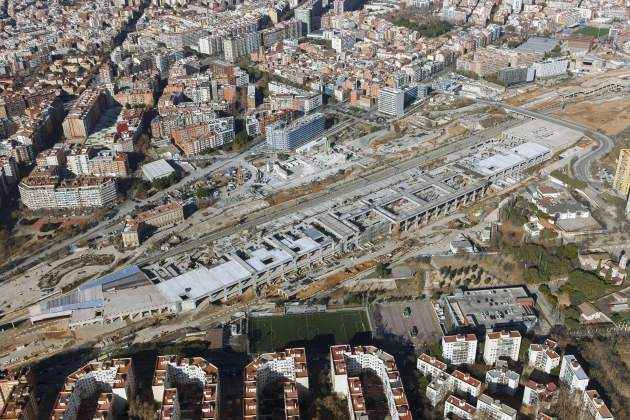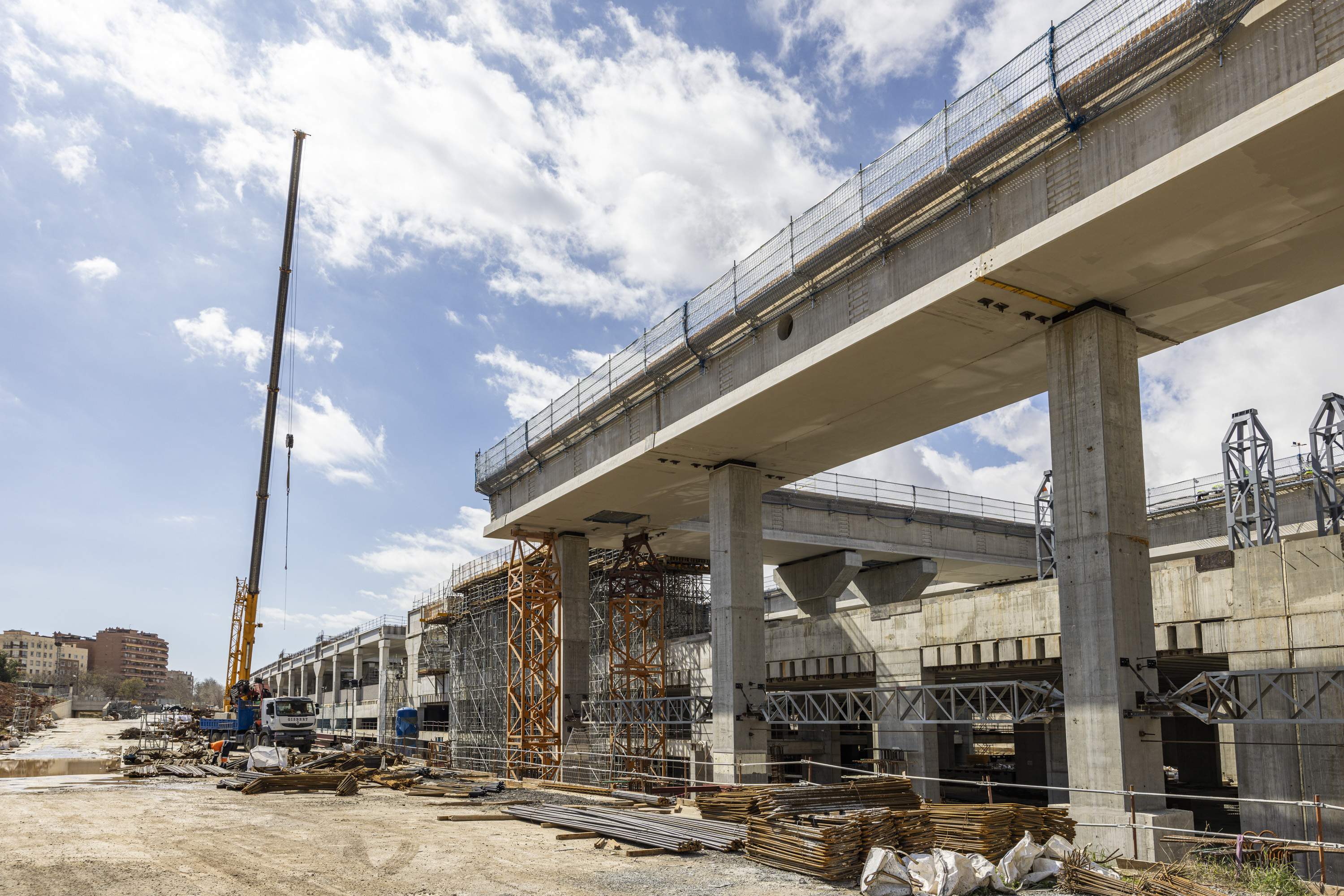The intermodal station of La Sagrera, conceived as Barcelona's great rail station in a future that is still not defined, but, nevertheless, one that is getting closer, continues its construction progress. It's been four years since the first Rodalies suburban trains, those on the Mataró line, began passing through the future station, and it's been two years since the trains from Granollers also passed through it, with the new Sant Andreu station also becoming operational within the complex. But the major milestone for 2024 - already announced, but now detailed - is that,at the end of this year, high-speed trains will also pass through the future megastation. At the apparently-eternal construction site in the north-eastern part of Barcelona city, between the neighbourhoods of Sant Martí and Sant Andreu, progress is happening.
The arrival of the fast AVE trains in 2024 will be the most visible milestone for users, but from the point of view of construction and operation, as much or more important than the entry of high-speed trains into La Sagrera, is that a second station located alongside, with a very specific series of functions, will become operational: known as the Train Technical-Handling Zone (ZTTT, in its Catalan acronym), it will offer logistics services, such as catering and cleaning. It is this double station aspect - plus the Rodalies service and the integration into the same complex of the bus station, with the connection to the L4 and L9/L10 lines of the Metro - that will turn Sagrera into a "station of stations"', as José Vicente Romero, deputy director of high-speed rail construction, pointed out this Tuesday, as part of a site visit.
The station takes shape
During a media visit to the construction works this Tuesday morning, there was, on the one hand, the impression of some aspects progressing while the entire complex still has a long way to go. But on the other hand, with the work already underway on the European-gauge tracks that will pass along the upper level of the future station, and also with the work on the roof, there is now a sense of the massive dimension of the whole station complex - it will be the longest building in Barcelona, with a length of one kilometre - as well as a sense of its functionality, articulated level by level: the lower floor for Rodalies suburban trains, already operational, although lacking a stop; the middle floor as a lobby, located at the street level of the Sant Martí district, allowing users to walk in, and the upper floor for the high-speed lines. And above all, the linear urban park, which will eventually cover the entire area of rail activity between Carrer Bac de Roda and the Nus Trinitat junction - and which will be the culmination of the work.
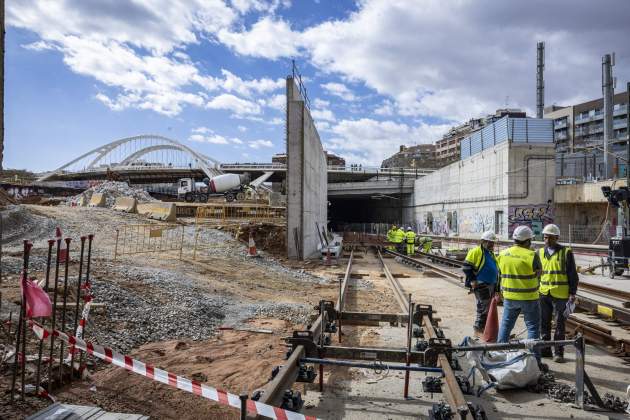
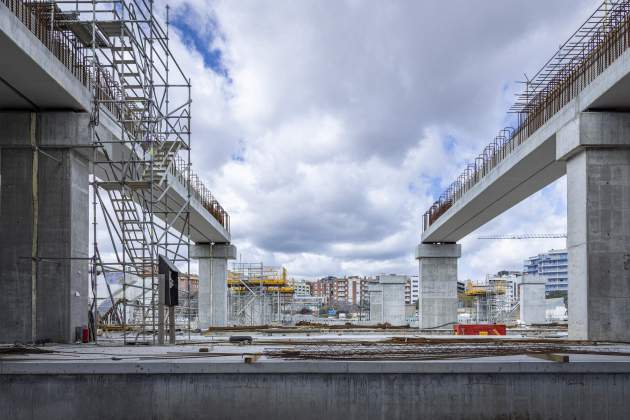
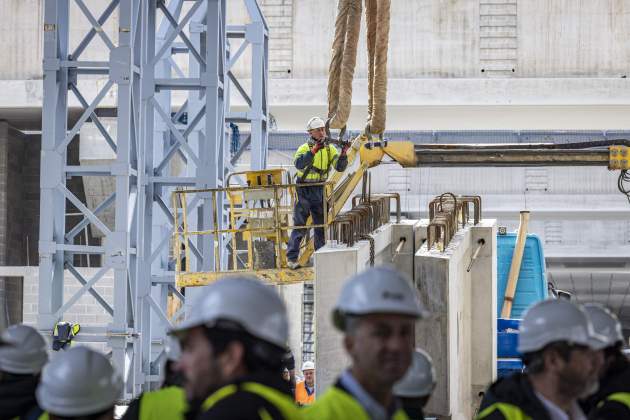
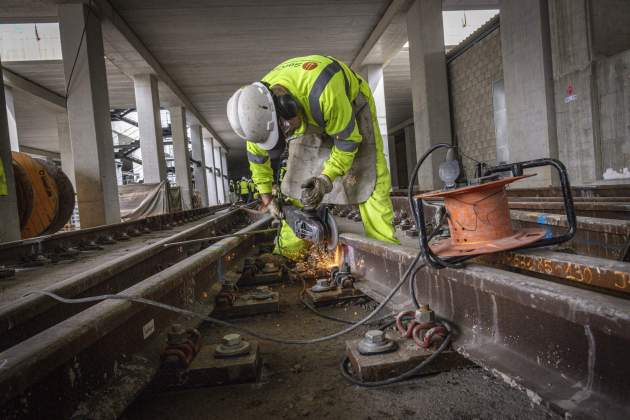
However, the billion-euro question - that is, when will it all be finished and fully operational? - remains unanswered. In fact, both Romero and Alberto Alcañiz, engineer responsible for the Sagrera Sant Andreu operation, note that, in order to complete the work, the "architectural work" of the station itself also remains, and that large job is outside the projects they have in their hands. Of course, they ticked off the milestones that are being met, and explained how 2024 will see high-speed trains passing through the station, along a track that is already being laid along the seaward side of the complex, as well as putting the ZTTT into action with four tracks for "parking trains and minor cleaning".
Forecasts for 2026
Looking ahead to 2026, the subequent steps will be to integrate the high-speed track - on the inland-side - into the station and put into operation the rest of the ZTTT tracks, which will number ten in total, in order to begin offering the full range of catering and cleaning services planned. In fact, despite the fact that this logistics station will be hidden from users, infrastructure firm Adif highlights its importance in terms of the operation of high-speed trains, and especially in a context of market liberalization. These services are currently carried out in railway facilities in Can Tunis, close to Barcelona's Zona Franca, requiring trains to travel several kilometres from the current high-speed hub at Sants, but when La Sagrera is 100% operational, it will all be right there, 200 metres away. In other words, the operational capacity will increase exponentially.
Romero and Alcañiz explained the difficulty of making progress with the works while at the same time maintaining railway service, a challenge which necessitates organizing the work in phases. For this reason, the entire area of high-speed platforms is already well advanced on the seaward side of the complex, facing the Sant Martí neighbourhood; but the inland side, facing Sant Andreu, cannot begin until high-speed traffic is diverted through the interior of the future station. All in all, it is a gigantic puzzle that also includes the covering over of the complex, on which considerable progress has also made, with a structure of eight modules in the form of inverted pyramids. One of these forms already exists and work is being done on a second.
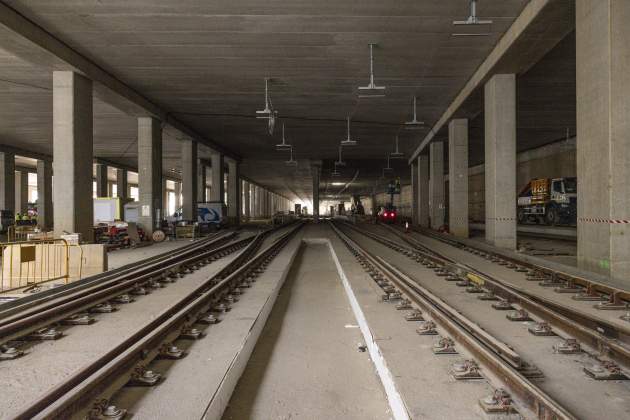
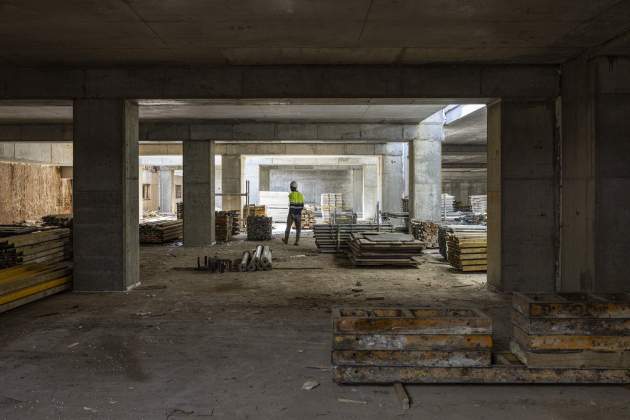
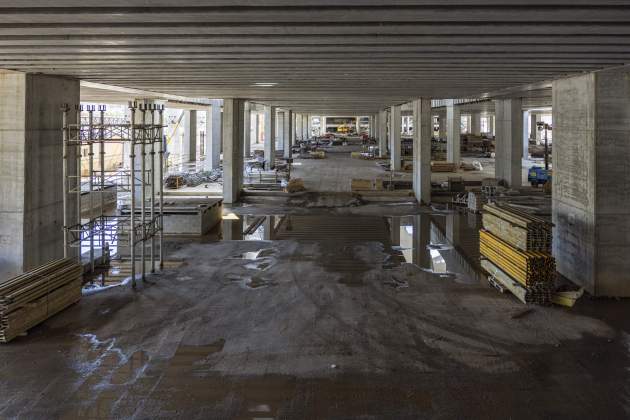
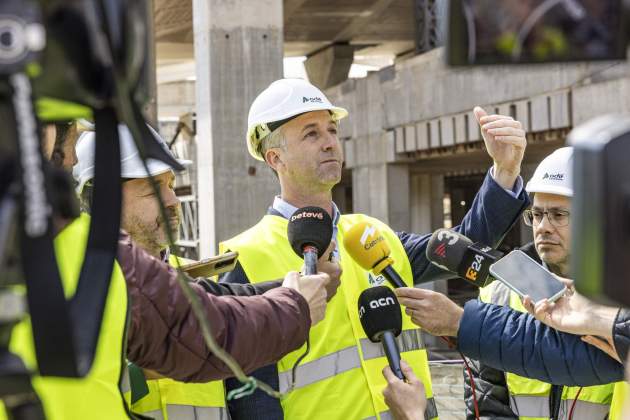
When all is said and done, the Sagrera project still has years of work ahead of it, but as for the engineering work on "the largest civil engineering work in Spain", there is, so to speak, light at the end of the tunnel. In the absence of defined dates, by the end of 2026 the full gamut of rail services being integrated into the massive complex will already be present, and still to be finished will be the architectural work on the station and the full entry into service of the centre for the public.
